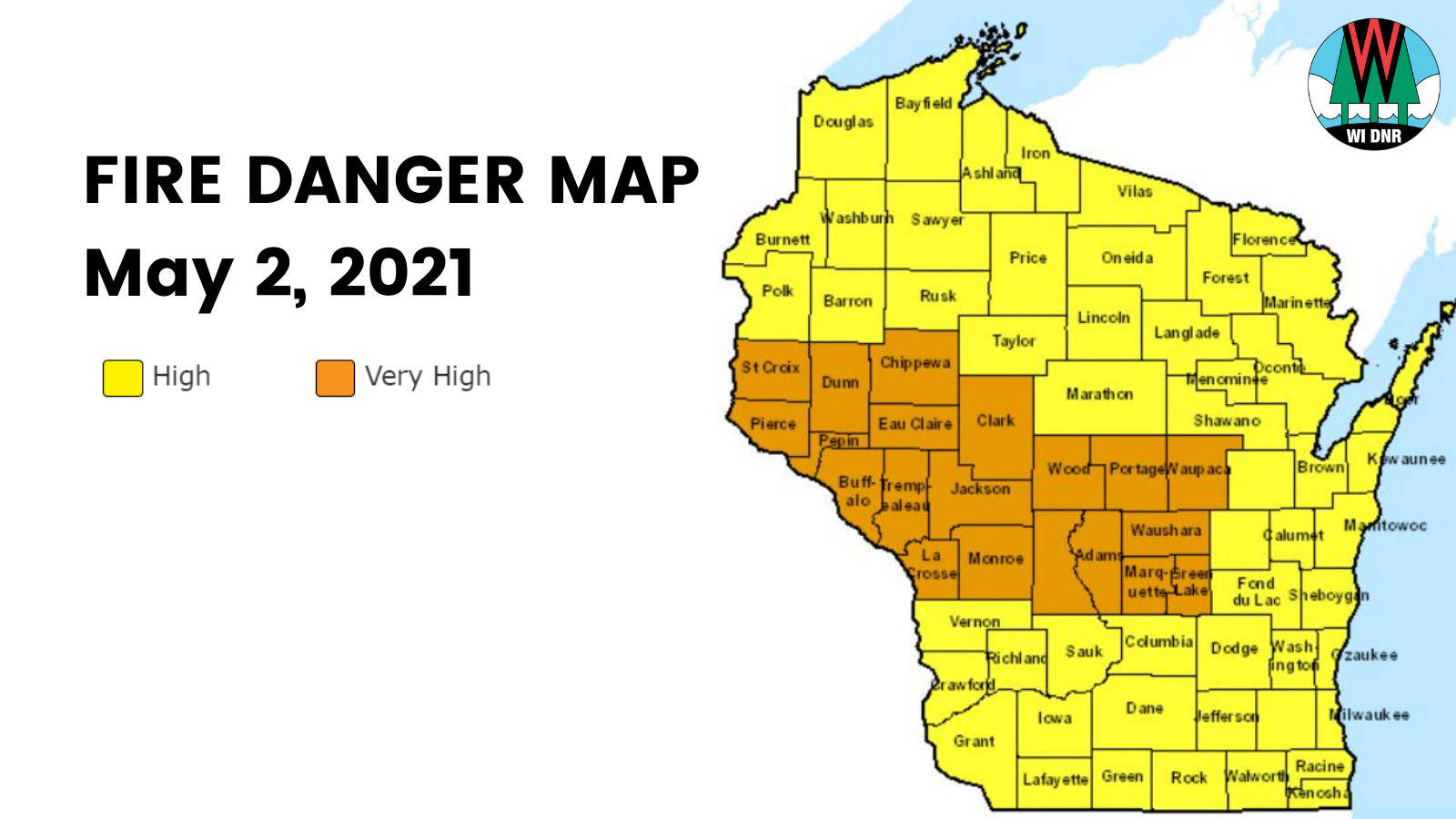Contact: DNR Office of Communications
DNRPress@wisconsin.gov
Fire Danger Remains Very High And High Across The State
Be Vigilant; Avoid Burning
 Fire Danger Remains Very High And High Across The State.
Photo credit: Wisconsin DNR
Fire Danger Remains Very High And High Across The State.
Photo credit: Wisconsin DNR
MADISON, Wis. – The Wisconsin Department of Natural Resources (DNR) today announced that fire danger remains high and moderate across the state.
There is VERY HIGH fire danger in the following counties today: Adams, Buffalo, Chippewa, Clark, Dunn, Eau Claire, Green Lake, Jackson, La Crosse, Marquette, Monroe, Pepin, Pierce, Portage, St. Croix, Trempealeau, Waupaca, Waushara and Wood.
There is HIGH fire danger in the following counties today: Ashland, Barron, Bayfield, Brown, Buffalo, Burnett, Calumet, Clark, Columbia, Crawford, Dane, Dodge, Door, Douglas, Florence, Fond du Lac, Forest, Grant, Green, Iowa, Iron, Jackson, Jefferson, Juneau, Kenosha, Kewaunee, Lafayette, Langlade, Lincoln, Manitowoc, Marathon, Marinette, Menominee, Milwaukee, Oconto, Oneida, Outagamie, Ozaukee, Polk, Price, Racine, Richland, Rock, Rusk, Sauk, Sawyer, Shawano, Sheboygan, Taylor, Vernon, Vilas, Walworth, Washburn, Washington, Waukesha and Winnebago counties.
Warm temperatures, low humidity, breezy southwest winds and dry vegetation make it easy for a fire to start and spread quickly. This a critical period for fire potential and DNR fire control officials remain on high alert across the state. Regularly check fire danger and burning restrictions here. Report fires early by calling 911 immediately.
The DNR has responded to 540 wildfires burning 1,775 acres so far this season, plus many more suppressed by local fire departments and federal partners.
Debris burning is the leading cause of wildfires in Wisconsin. The best way to protect against a wildfire is to stop it before it starts. A fire could quickly start and spread in these conditions.
Campfires, ashes from fireplaces, outdoor grills, smoking, chainsaws, trailer chains, off-road vehicles or other small engines have the potential to throw a spark, ignite a fire and spread quickly. Embers from campfires or burn piles can remain hot for days. Wind can expose smoldering embers hidden in the ashes, allowing them to escape and cause a wildfire.
Although things may look green, spring is a dangerous time for wildfires, especially for pine trees which are in a phenomenon called the “spring dip.” During this time, the moisture content in the needles is low while the starch content is high. This combination, which is not visible to the naked eye, means that pine trees are more likely to catch fire during a wildfire and crown fires (fires in the tree tops) are possible.
Be fire smart. Fires caused by careless burning become more frequent this time of year. Never leave a fire unattended, and most importantly, before leaving, drown fire remains with water, stir and repeat until cold.
The DNR is asking the public to be especially careful with any activities that could potentially lead to a wildfire. If you are are outside of the DNR Protection Area please check local burning restrictions.
Again, report fires early by calling 911 immediately. Regularly check fire danger and burning restrictions here.

